As part of the Winter 2024 semester of Food Literacy for All, a community-academic partnership course hosted by the University of Michigan Sustainable Food Systems Initiative, students prepared posters on a variety of topics relating to food history. In their research for this project: "Planted in HIstory: A Food Future Informed by the Past," students drew on historical documents available online from a variety of platforms, including the Hathi Trust Digital Library and the Food and Drink in History Database. Both of these repositories of digitized primary sources include many items from the Janice Bluestein Longone Culinary Archive. For greater accessibility and easier reading, the main text of each poster is included in the image captions below.

"Do you know why the US Food Administration was created? Nope, it's not for public health reasons! Rather, it was created on August 17, 1917 by executive order primarily to provide food for the Allies in Europe during World War I. The US launched a rigorous campaign, greatly humanitarian in nature, onboarding roughly half the families in the nation to take on food pledges with weekly meatless, sweetless, porkless, and wheatless days to ship those foods to soldiers and starving civilians in Europe. This campaign demonstrates how the lack of overindulgence in food sympolizes patrioatism in the US during WWI."
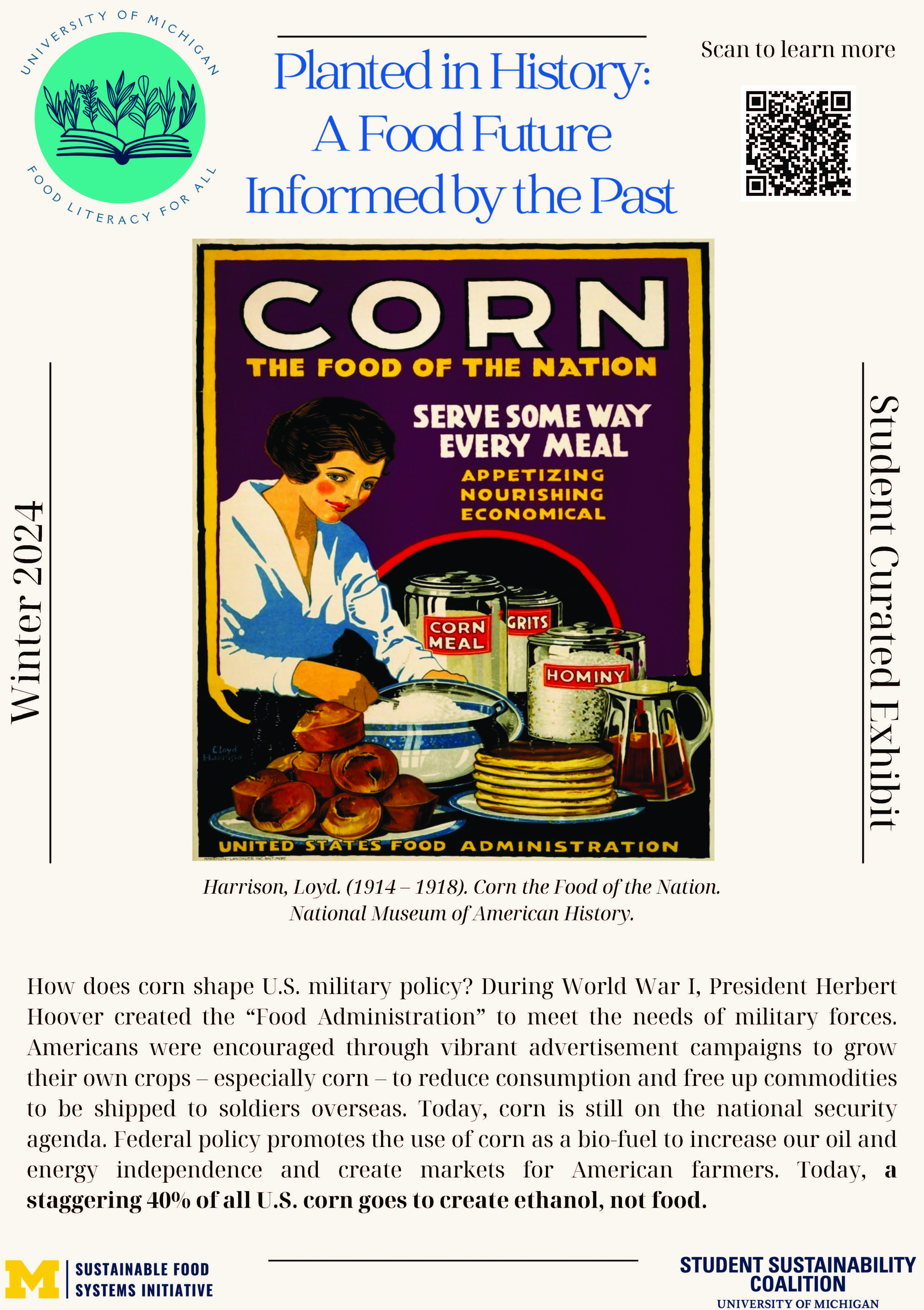
"How does corn shape U.S. military policy? During World War I, President Herbert Hoover created the 'Food Administration' to meet the needs of military forces. Americans were encouraged through vibrant advertisement campaigns to grow their own crops - especially corn - to reduce consumption and free up commodities to be shipped to soldiers overseas. Today, corn is still on the national security agenda. Federal policy promotes the use of corn as a bio-fuel to increase our oil and energy independence and create markets for American farmers. Today, a staggering 40% of all U.S. corn goes to create ethanol, not food."
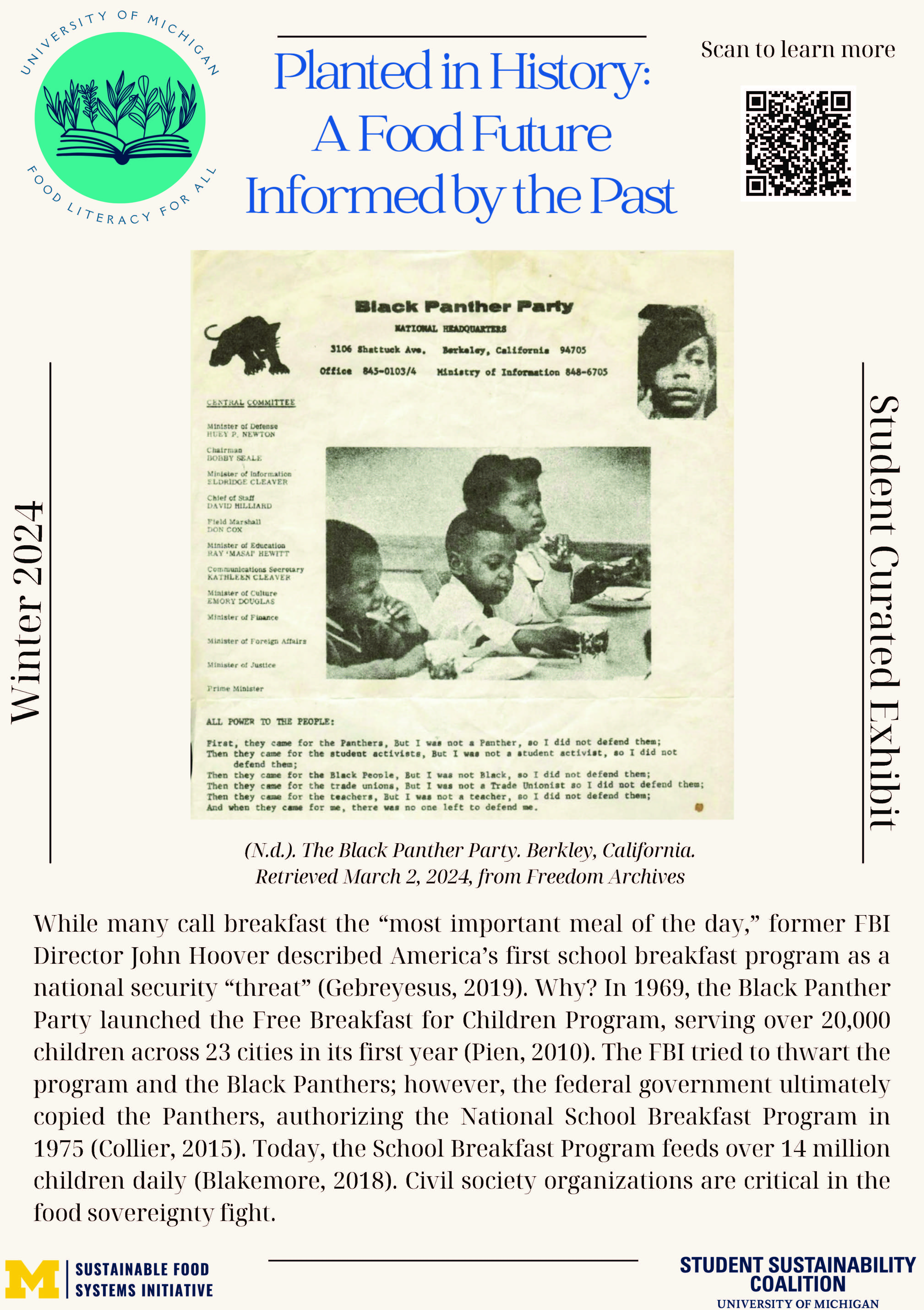
While many call breakfast the 'most important meal of the day,' former FBI Director John Hoover described America's first school breakfast program as a national security 'threat' (Gebreysus, 2019). Why? In 1969, the Black Panther Party launched the Free Breakfast for Children Program, serving over 20,000 children across 23 cities in its first year (Pien, 2010). The FBI tried to thwart the program and the Black PAnthers; however, the federal government ultimately copied the Panthers, authorizing the National School Breakfast Program in 1975 (Collier, 2015). Today, the School Breakfast Program feeds over 14 million children daily (Blakemore, 2018). Civil society organizations are critical in the food sovereignty fight."
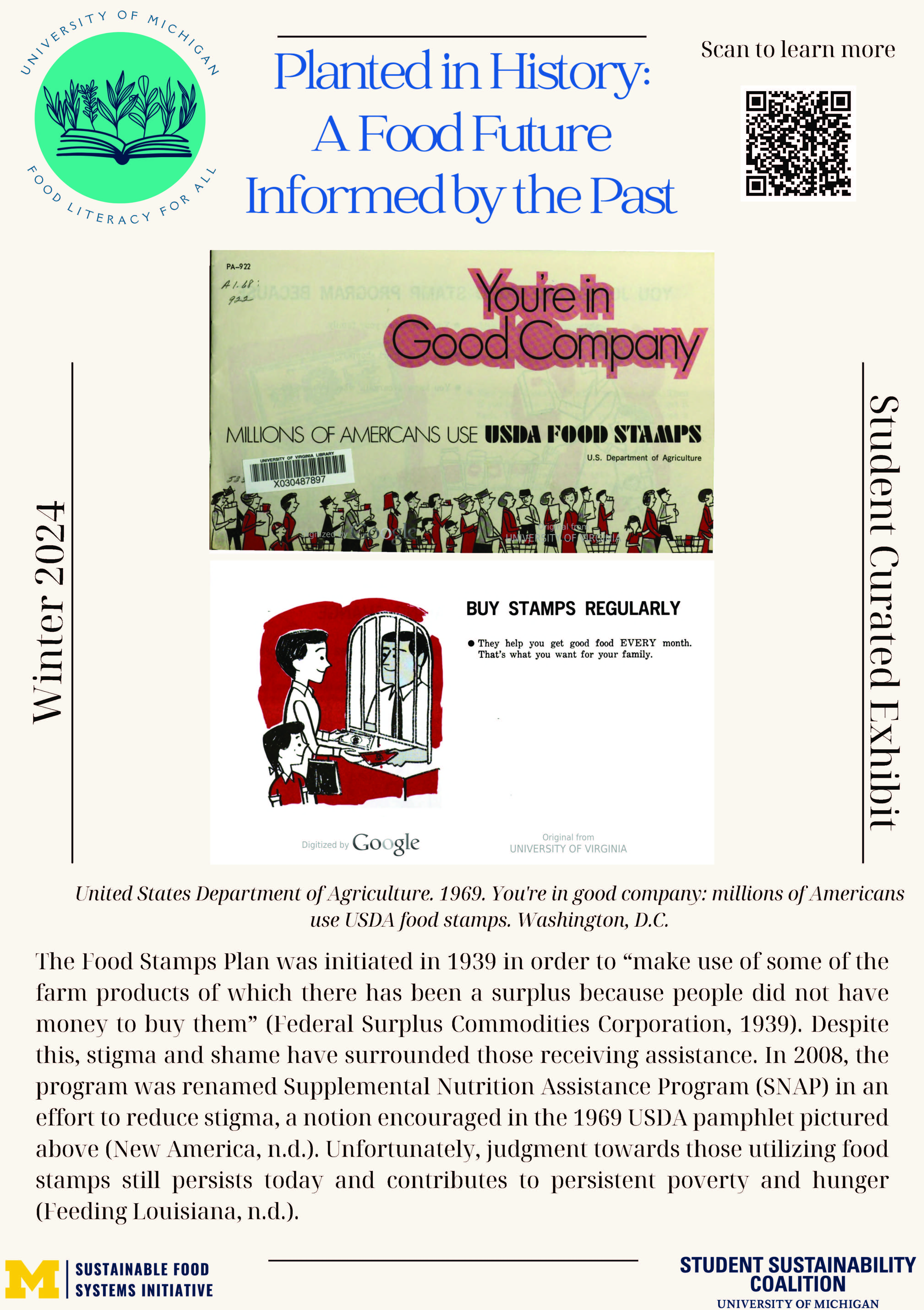
"The Food Stamps Plan was initiated in 1939 in order to 'make some use of the farm products of which there has been a surplus because people did not have the money to buy them'(Federal Surplus Commodities Corporation, 1939). Despite this, stigma and shame have surrounded those receiving assistance. In 2008, the program was renamed Supplemental Nutrition Assistance Program (SNAP) in an effort to reduce stigma, a notion encouraged in the 1969 USDA pamphlet pictured above (New America, n.d.). Unfortunately, judgement towards those utilizing food stamps still persists today and contributes to persistent poverty and hunger (Feeding Louisiana, n.d.)"

Upton Sinclair released his book "The Jungle" in 1906. It is mainly concerned with the terrible working conditions and exploitation that immigrant laborers in Chicago's meatpacking industry endured in the early 20th century. The narrative follows Lithuanian immigrant Jurgis Rudkus, the main character, and his family as they fight to live in the harsh and filthy conditions of the meatpacking facilities. Sinclair paints a realistic picture of the horrible working conditions, corruption, and abuse that are common in this field. The American Dream, immigration, poverty, and capitalism are among the other topics covered within this novel. "The Jungle" had a profound effect on American culture, raising awareness of labor rights and eventually inspiring laws to enhance working conditions and food safety."
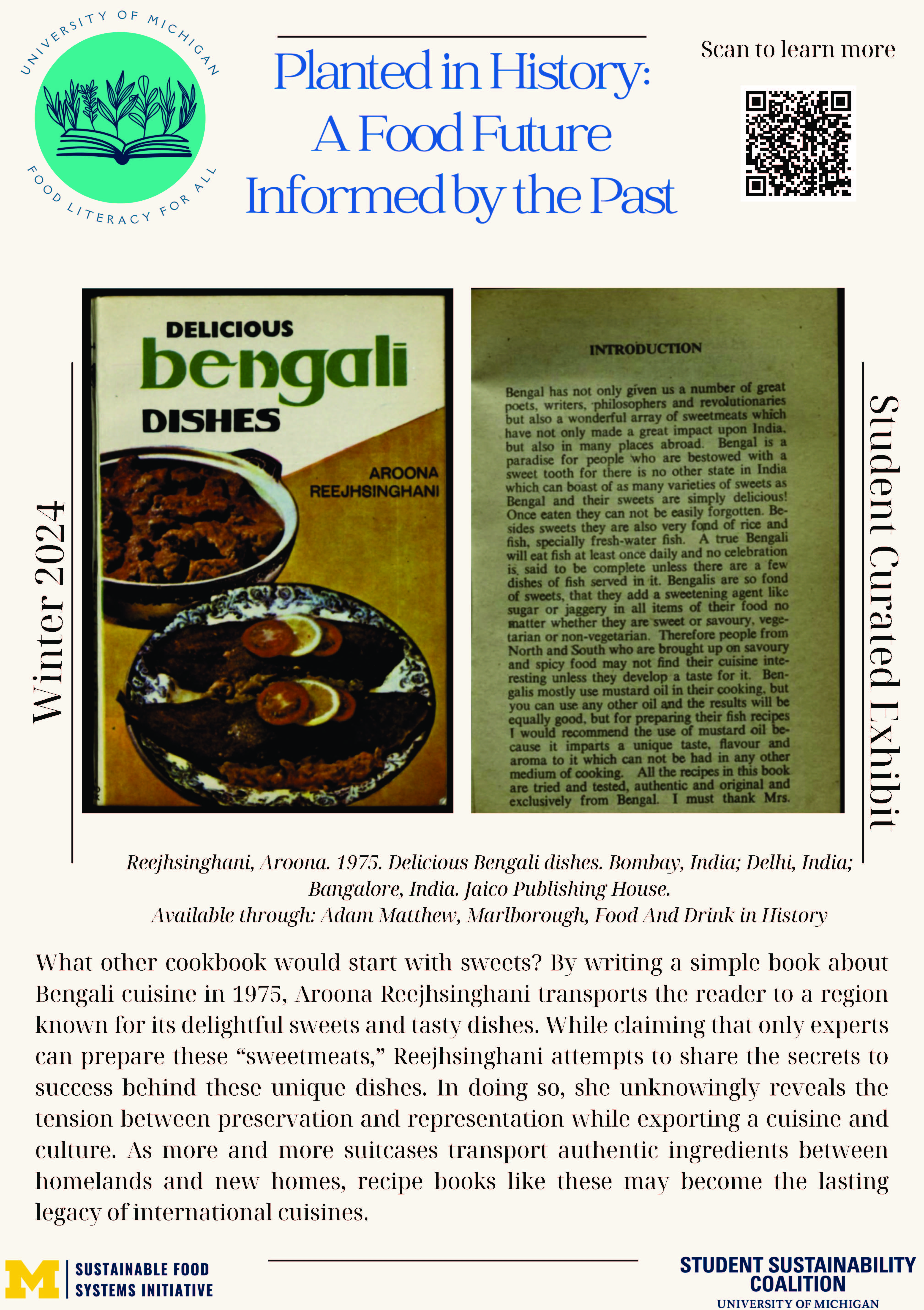
"What other cookbooks would start with sweets? By writing a simple book about Bengali cuisine in 1975, Aroona Reejhsinghani transports the reader to a region known for its delightful sweets and tasty dishes. While claiming that only experts can prepare these 'sweetmeats,' Reejhsinghani attempts to share the secrets to success behind these unique dishes. IN doing so, she unknowingly reveals the tension between preservation and representation while exporting a cuisine and culture. AS more and more suitcases transport authentic ingredients between homelands and new homes, recipe books like these may become the lasting legacy of international cuisines."

"This c. 1950 menu from Fong Wan's Club Shanghai illuminates the rich tapestry of mid-20th-century American dining, where Chinese and American cuisines coalesced. Reflecting the era's cultural melting pot, the menu offers a window into the social dynamics of the time, showcasing not just food, but also the entertainment that was integral to the dining experience. The juxtaposition of 'Chow Mein' with 'Grilled Filet Mignon' encapsulates a society embracing diversity. This menu is more than a culinary artifact; it's a testament to the enduring legacy of immigrant influences on America's palate and a reminder of food's role in cultural integration."
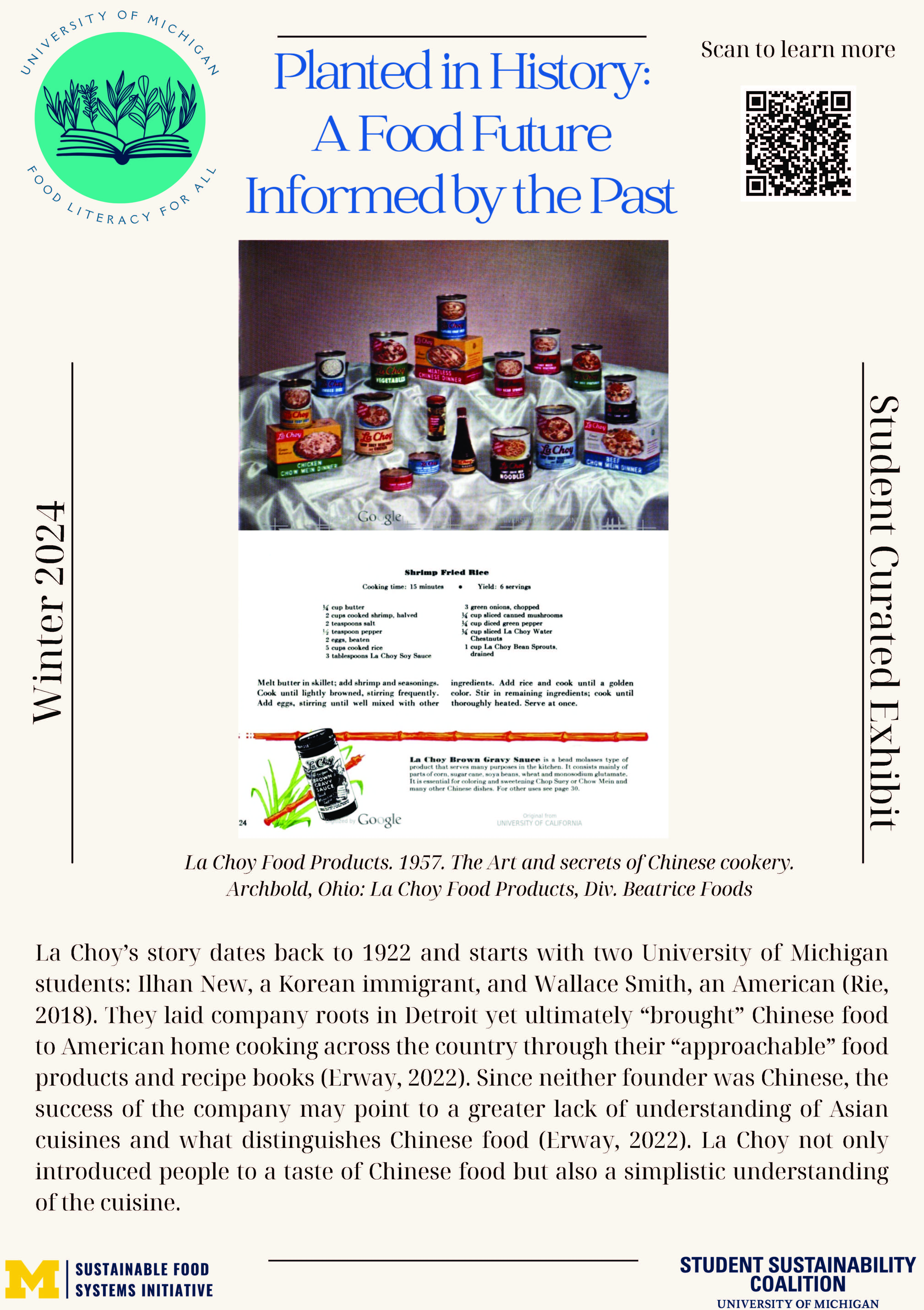
"La Choy's story dates back to 1922 and starts with two University of Michigan sutdents: Illhan New, a Korean immigrant, and Wallace Smith, an American (Rie, 2018). They laid company roots in Detroit yet ultimately 'brought' Chinese food to American home cooking across the country through their 'approachable' food products and recipe books (Erway, 2022). Since neither founder was Chinese, the success of the company may point to a greater lack of understanding of Asian cuisine and what distinguishes Chinese food (Erway, 2022). La Choy not only introduced people to a taste of Chinese food but also a simplistic understanding of the cuisine."

"While not forgotten, the art of 'employing' birds to help protect crops is seemingly ignored or underappreciated by many who may not know about the work that goes into the food they buy from the supermarket. Birds are one of the farm's most effective and natural pest controllers, with some species relying on insects for one-fifth of their total food intake. Not only do birds eat the common insects plaguing farmers' crops, but many species of birds will also eat the mice that feed on and destroy crops. In essence, birds serve as incredible allies and contribute significantly to sustainable agricultural practices."
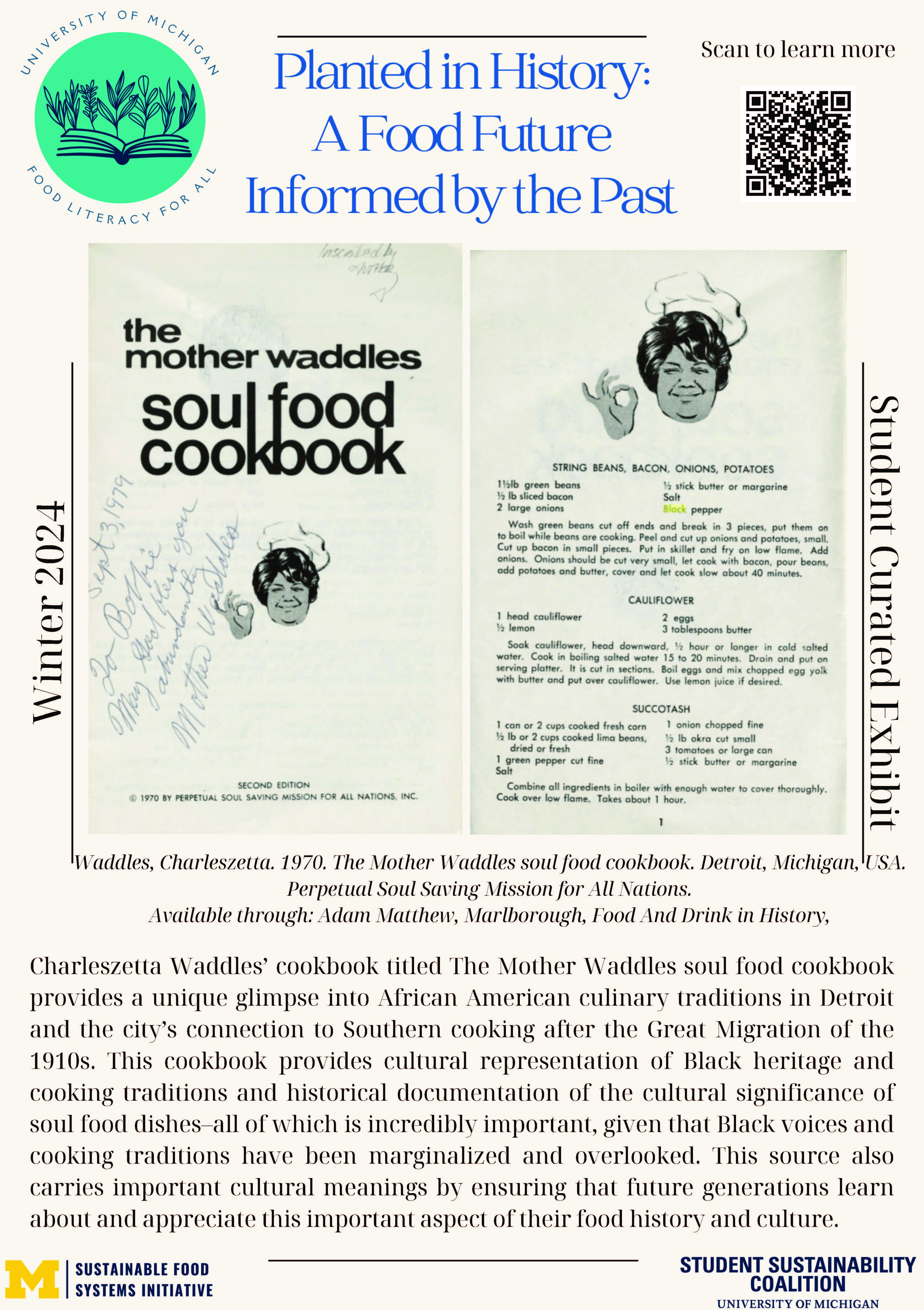
Charleszetta Waddles' cookbook titled The Mother Waddles Soul Food Cookbook provides a unique glimpse into African American culinary traditions in Detroit and the City's connection to Southern cooking after the Great Migration of the 1910s. This cookbook provides cultural representation of Black heritage and cooking traditions and historical documentation of the cultural significance of soul food dishes - all of which is incredibly important, given that Black voices and cooking traditions have been marginalized and overlooked. This source also carries important cultural meanings by ensuring that future generations learn about and appreciate this important aspect of their food history and culture."